An Introduction to Common Crotch Adjustments
Recently, I drafted a pattern and made a toile of a pair of drop-crotch pants. When I tried them on, I straight away noticed (and felt) they weren’t quite right. The most obvious issue was that the back crotch felt tight and pulled uncomfortably, especially when bending over. Walking also felt a little restricted, with my stride somewhat limited.
I’m sure I am not the only one to have experienced this. This is a pretty common problem—not just in pants, but also in shorts, jumpsuits, and other garments with crotch seams. The good news? These sorts of fit issues are usually fairly straightforward to fix.
In this tutorial, I’ll focus on the crotch point and rise and a couple of the most common fitting issues that occur when these areas just aren’t quite right. This is not an exhaustive list. There are a multitude of adjustments that can be made to pants. I am simply focusing on a couple of the key ones to get you thinking.
Understanding the anatomy of pants
Before diving into any adjustments, I thought it might be helpful to get familiar with the terminology and key parts of a pant block.
Total rise
You may hear the term “total rise” used when discussing pant fit. This refers to the full length of the crotch seam. The total rise starts at the front waist, curving along the crotch, and finishing at the back waist. It is essentially the seam that wraps between the legs, from front to back.
Front vs. back rise
The shape and length of the total rise, along with the position of the crotch point, play a significant role in how a garment fits and moves.
- The front rise is typically shorter and less curved than the back rise, as the front of many bodies tends to have a more gradual contour. However, body shapes vary, and this can differ from person to person.
- The back rise is typically longer and more curved (or “scooped”) to accommodate the bum and allow for movement, such as sitting. This area will often include added ease to allow for this.
- The point at which the front and back rise meet is referred to as the crotch point.
How crotch fit issues may appear
It’s helpful to understand how crotch fit issues can show up in a garment—not just visually, but also in how a garment feels when worn.
What you cen be on the lookout for:
- Drag lines: These are tension lines in the fabric that radiate toward the problem area. They’re actually helpful clues. Think of them as arrows pointing to what needs adjusting.
- Smile or frown lines: These wrinkles can curve upward (“smiles”) or downward (“frowns”). Again these can be quite helpful.
-
- Smile lines (wrinkles curving upward just like a smile) can indicate excess fabric or sagging in that area.
- Frown lines (wrinkles curving downward in a frown) can indicate the fabric is too tight in that area, causing it to pull or lift.
-
- Discomfort or imbalance: Feelings of tightness or pulling, bagginess or sagging.
However, there are a few key things to keep in mind when working with the fit of pants:
- Not all of these lines are bad: Some wrinkling can simply be because of the contours of the body, or be the result of natural movement or fabric ease.
- Fit is personal: Your body is unique, and so are your fitting needs. Trust how the garment feels and looks on you!
- Small changes make a big difference: When adjusting the crotch area, even a few millimetres can significantly affect the fit.
- Always make a toile (test garment): I cannot stress this enough! It might take more time upfront, but it can save a lot of frustration and money in the long run—and help you feel that bit more confident before cutting into the final fabric.
- Different fabrics behave differently: The same pattern can fit quite differently depending on the fabric you use. For example, stretch fabrics require less ease and naturally conform to the body more easily, whereas woven fabrics need a bit of extra room for comfort and movement. The weight and drape of the fabric can also influence how it wrinkles and falls.
Common adjustments to the crotch point
The crotch point is where the rise ends and the inner leg seam (inseam) begins. It sits right between the legs and, although it’s a small part of the pattern, it plays an important role in both comfort and movement so don’t underestimate it.
Adjusting it can change how the garment fits through the inner thigh and crotch area, and also affect how the total rise is distributed between the front and back.
Because this area takes on the most stress, through activities like walking, sitting, or squatting, getting the crotch point right is key.
Note: As I mentioned, small changes, even of just a couple of millimetres, make a big difference. However, for the purpose of demonstrating a point, I may have exaggerated a few of these changes in the diagrams below. They are not to scale.
Extending the crotch point
You may see drag lines (often frown-shaped) that come from the crotch area and almost radiate in an downward direction. The area may feel tight and restrictive, especially when moving.
This can indicate that the crotch extension is too short, meaning there isn’t enough length in the crotch curve.
How to adjust:
- Add length to the crotch curve on the front and/or back by extending the crotch point horizontally. This increases the total rise and creates more room in the crotch area.
- Blend this adjustment smoothly into the inner leg seam, down to the knee, to maintain a smooth and natural shape.
Reducing the crotch point
Conversely, you may notice drag lines that are more smile-shaped, curving in an almost upward direction from the crotch. The area may look baggy and the fabric might sag, hence the smile shape.
This may indicate that the crotch extension is too long, resulting in excess fabric in the crotch area.
How to adjust:
- Shorten the crotch curve on the front and/or back by bringing the crotch point in horizontally. This reduces the total rise and removes some of the excess fabric.
- As before, blend the adjustment back into the inner leg seam, down to the knee, to keep the shape smooth and natural.
Common adjustments to the crotch rise
The crotch depth, also called the rise, is the vertical measurement from the waistband down to the crotch seam.
Adjusting this length changes how the garment fits around your pelvis and seat, especially when sitting or moving.
Lengthening the rise
This is the issue I encountered in my recent toile (and the inspiration behind writing this article).
You may need to lengthen the crotch depth, particularly in the back rise, if you notice any of the following signs:
- A “wedgie” sensation or tightness at the back crotch seam.
- Pulling across the seat or lower back, especially when sitting or bending.
- Restricted stride or an uncomfortable feeling when walking.
- Drag lines pointing toward the centre back seam.
- The back waistband being pulled downward.
These can suggest there is not enough vertical room in the seat area (ie. the rise is too short) and your body is making the fabric pull. To fix this, you can try lengthening the rise to create more vertical space in this area. There are two options to do this.
Option 1: Full Seat adjustment
Use a horizontal slash-and-spread technique on the pattern or toile to lengthen the rise.
- Draw a horizontal line around hip level that extends from the side seam to the crotch seam.
- Cut along this line. If working manually, leave a small hinge at the side seam as this will help when pivoting.
- To lengthen, pivot the top section of the pants upward, adding the required amount of length.
- Blend the adjustment at the side seam from the waist down to at least the knee, and from the waist to the crotch point. Keep the shape smooth and natural.
Option 2: Scoop the crotch curve
Alternatively, you can add length to the rise by lowering the deepest point of the crotch curve, creating a more scooped shape. This increases the total crotch depth without affecting the horizontal width significantly. Personally, I would maybe reserve this method for more minor adjustments to ensure a nice, natural curve is maintained.
You may need to shorten the crotch depth, particularly in the back rise, if you notice the following signs:
- The crotch area looks baggy or oversized.
- Excess fabric or sagging under the seat (especially below the bum).
- The pants feel too roomy or hang low in the crotch.
These suggest there’s too much vertical room in the seat area (ie. the rise is too long) and the fabric is pooling or sagging where your body essentially doesn’t fill it out.
To fix this, you can try reducing the length of the rise by shortening the crotch depth. This may help eliminate any excess fabric. There are two common ways to do this.
Option 1: Flat seat adjustment
Use a horizontal slash-and-spread technique on your pattern or toile to shorten the rise.
- Repeat steps 1-2 from a full seat adjustment.
- To shorten, pivot the top section of the pattern downward, overlapping the pieces by the amount you want to remove.
- Blend the adjustment at the side seam from the waist down to at least the knee, and from the waist to the crotch point. Keep the shape smooth and natural.
Option 2: Fill (or raise) the back crotch curve
Alternatively, you can raise the deepest point of the crotch curve slightly, reducing the total crotch depth. Again, I would tend to use this method for minor adjustments.
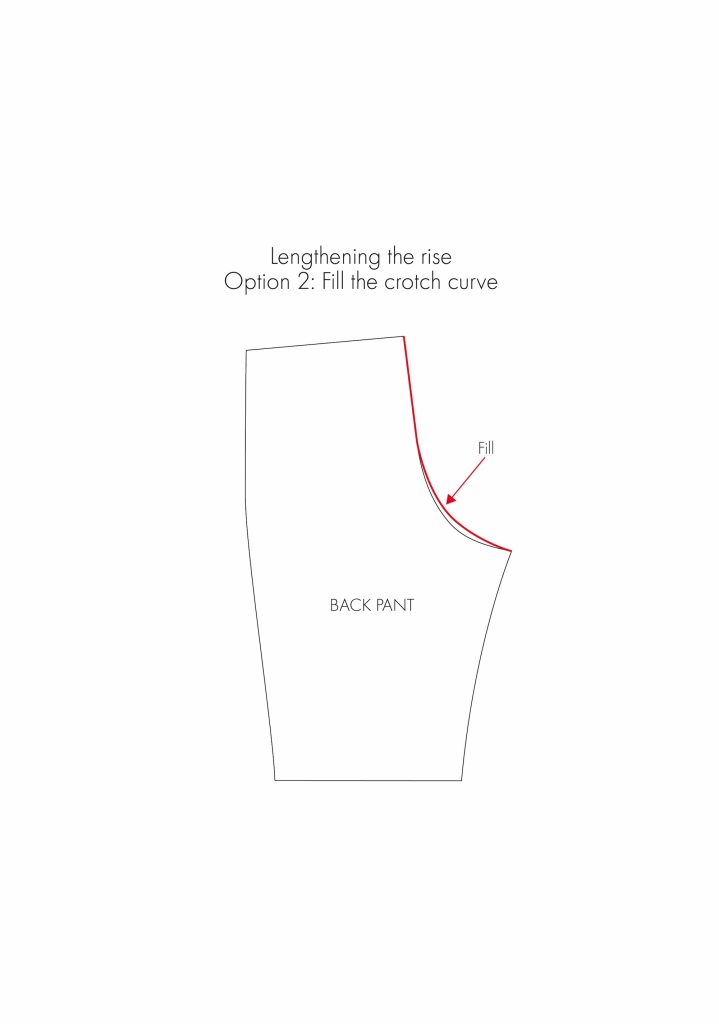 Don’t be discouraged if your first toile isn’t perfect. Fitting is a process, and every adjustment will teach you something new, bringing you that much closer to a garment that feels comfortable and looks just the way you want it.
Don’t be discouraged if your first toile isn’t perfect. Fitting is a process, and every adjustment will teach you something new, bringing you that much closer to a garment that feels comfortable and looks just the way you want it.
When it comes to pants, understanding how the rise and crotch point affect the fit is a great place to start!







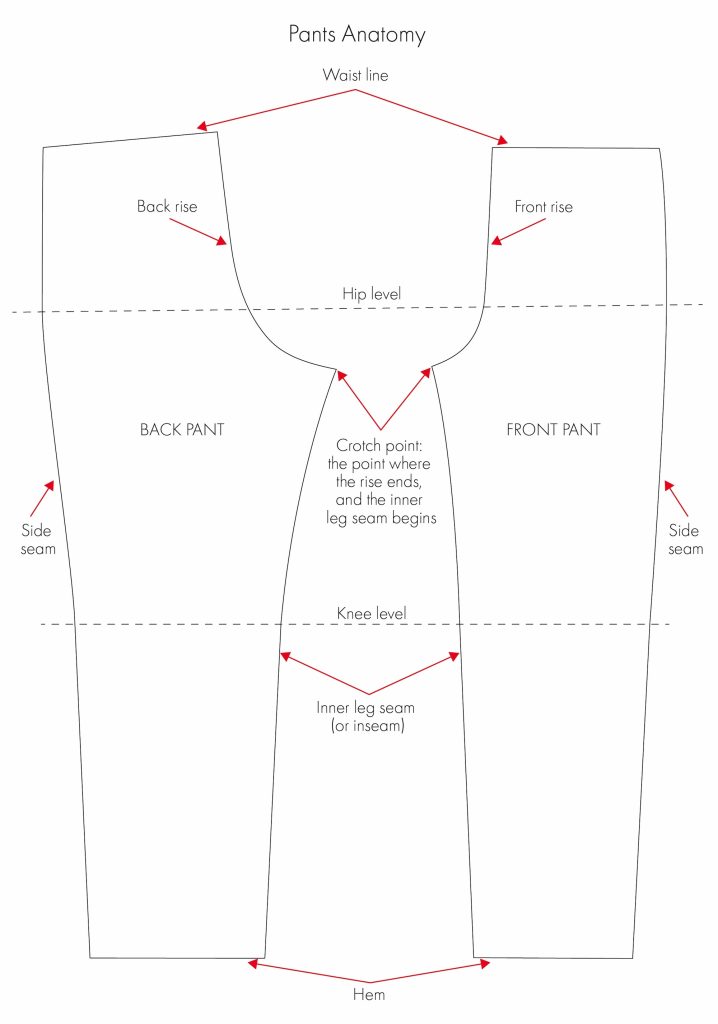
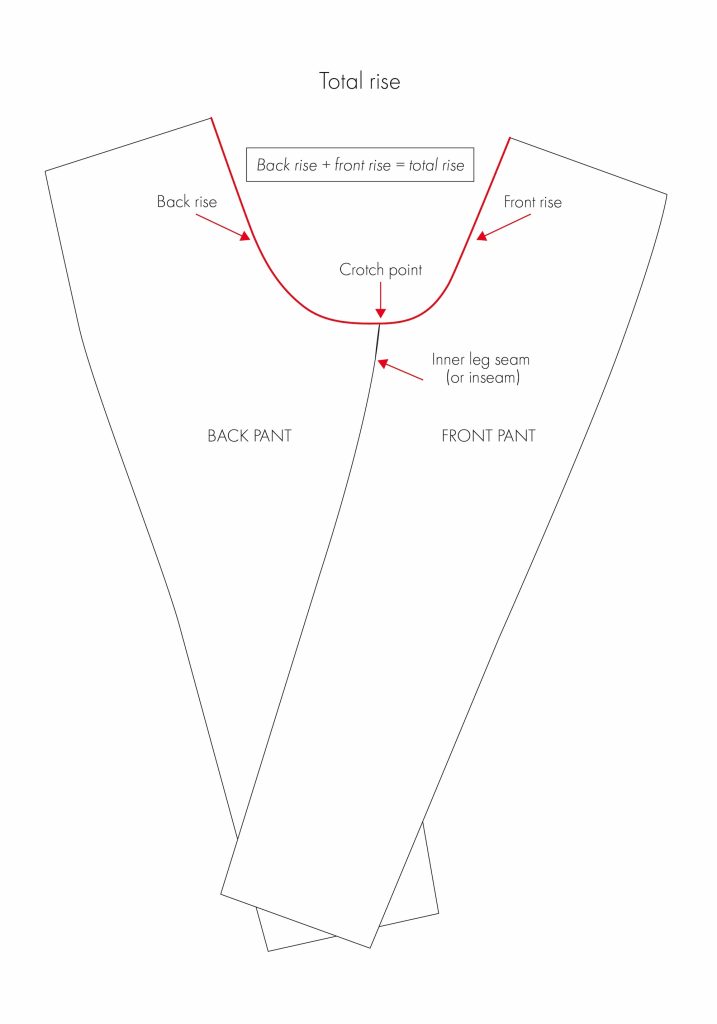
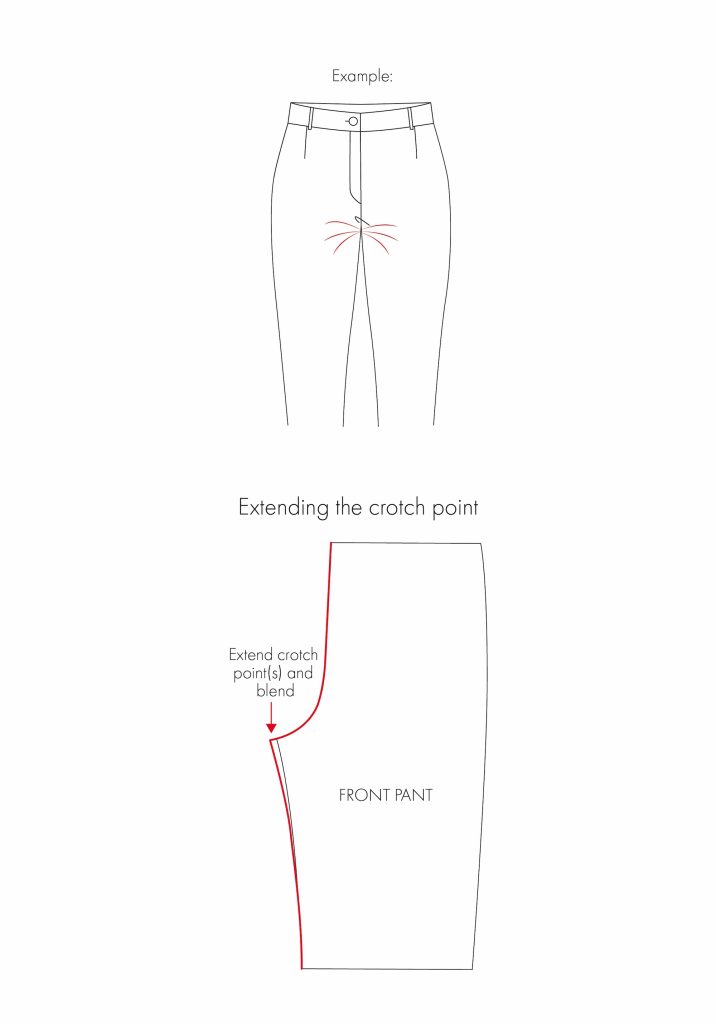
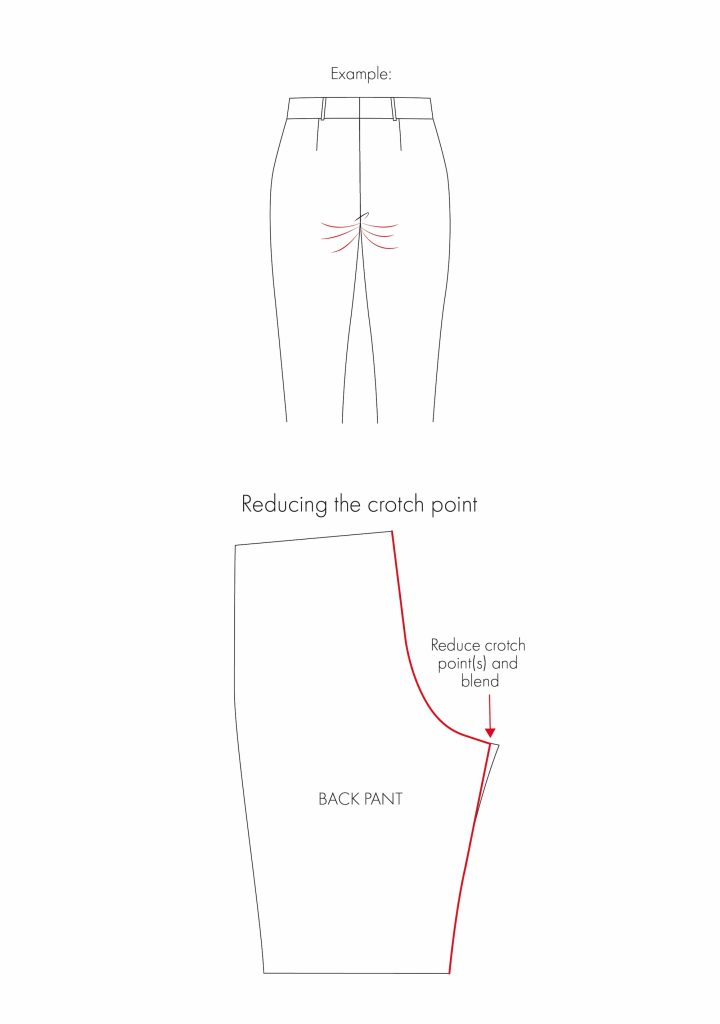


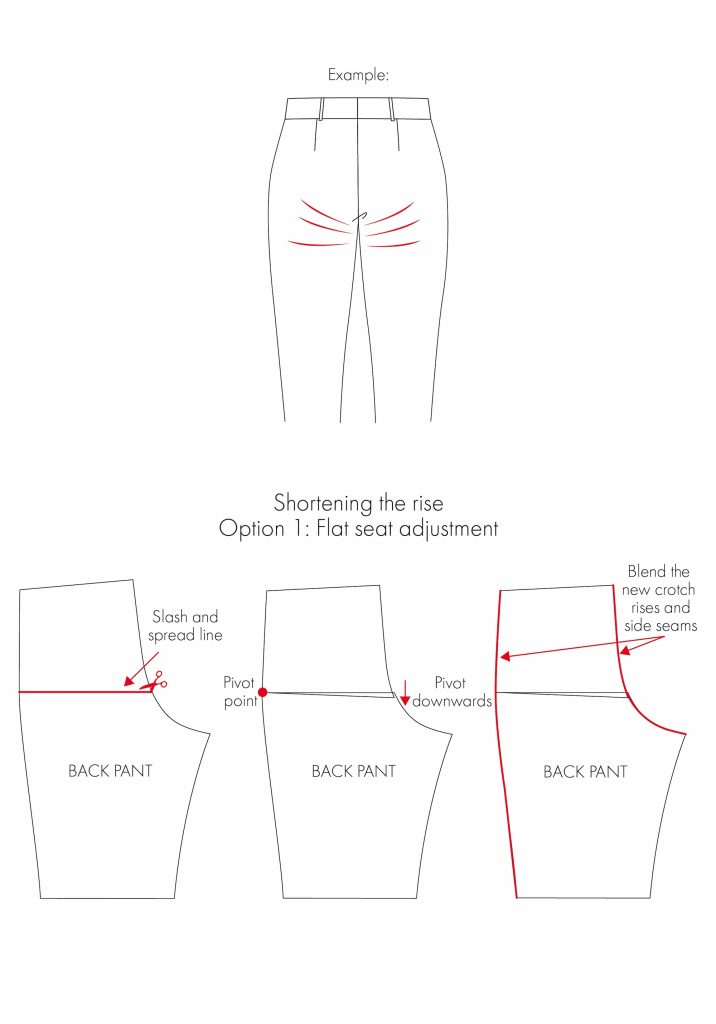



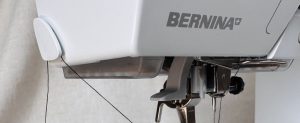




















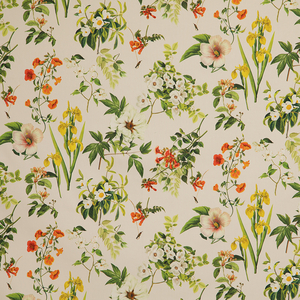


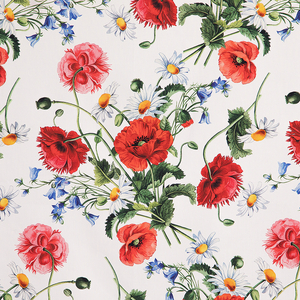

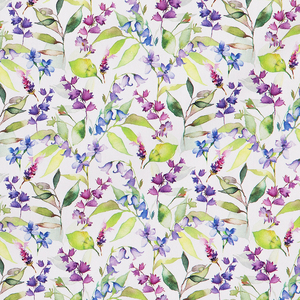









Leave a comment